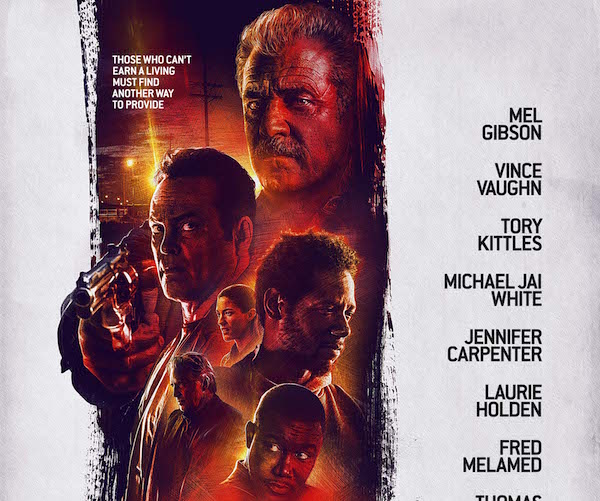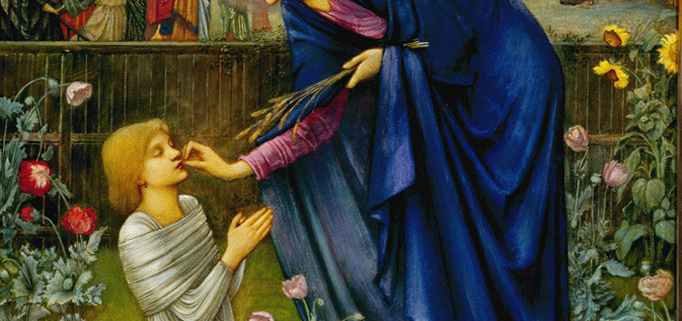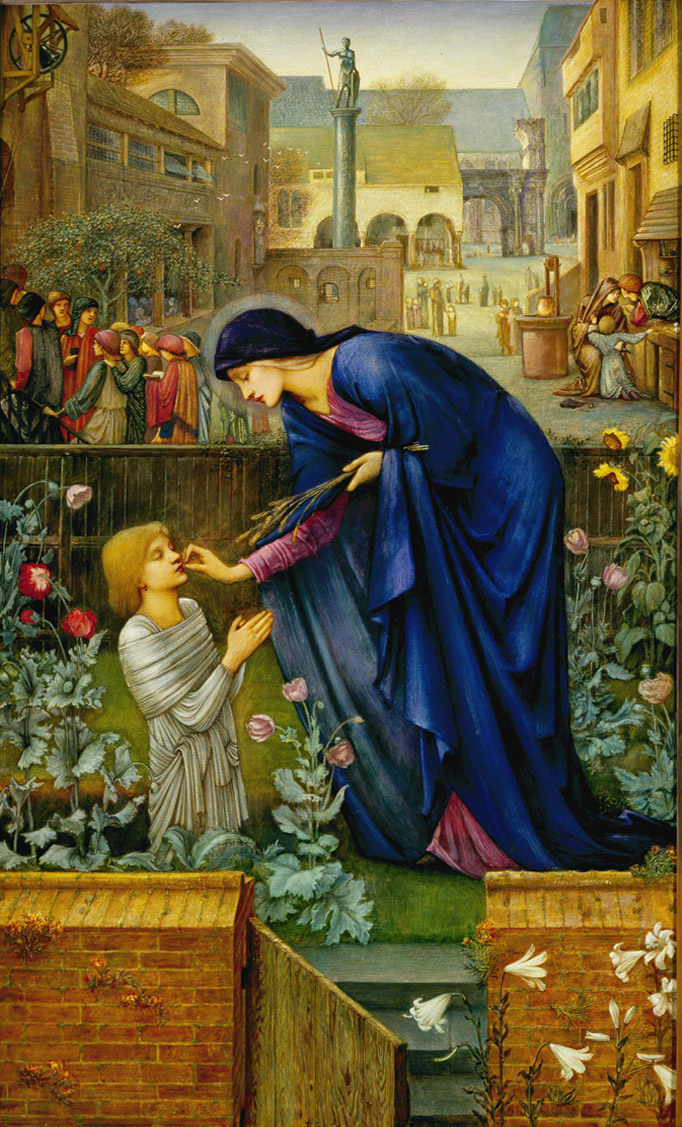Evil Genius: Constructing Wagner as Moral Pariah—PART 2

Jewish activists protesting the 2010 production of The Ring by the LA Opera
Wagner’s Racial Thinking
In addition to his concern about the baleful Jewish influence on German culture, Wagner, under the influence of Darwinism and the French racial theorist Arthur de Gobineau, became increasingly concerned about the fate of the White race generally. Wagner met Gobineau in Rome in 1876 and again in Venice in 1880 when he read the French author’s bestselling An Essay on the Inequality of the Human Races. Wagner thought that Gobineau had demonstrated in this famous essay that “we should have no History of Man at all, had there been no movements, creations, and achievements of the White man,” and was taken with his pessimistic notion that Western society was doomed because miscegenation would inevitably lead to the degeneration of the White race. He nevertheless disagreed with Gobineau’s claim that this degeneration was unstoppable. In his essay “Hero-dom and Christianity,” Wagner writes that: “We cannot withhold our acknowledgment that the human family consists of irremediably disparate races, whereof the noblest well might rule the more ignoble, yet never raise them to their level by commixture, but simply sink to theirs.” The Jews, however, offered a unique exception to this general rule:
The Jew, on the contrary, is the most astounding instance of racial congruence ever offered by world history. Without a fatherland, a mother tongue midst every people’s land and tongue he finds himself again, in virtue of the unfailing instinct of his absolute and indelible idiosyncrasy: even commixture of blood does not hurt him; let Jew or Jewess intermarry with the most distinct of races, a Jew will always come to birth.[1]
While accepting many of Gobineau’s basic premises, Wagner, in his 1881 essay about the German people entitled “Know Thyself,” rejects the idea of Aryan superiority and writes about the “enormous disadvantage at which the German race… appears to stand against the Jewish.” Furthermore, when Gobineau stayed with the Wagners for five weeks in 1881, their conversations were punctuated with frequent arguments. Cosima Wagner’s diary recounts one exchange in which Wagner “positively exploded in favor of Christianity as compared to racial theory.” Wagner proposed that a “true Christianity” could provide for the moral harmonization of all races, which could, in turn, help prevent the physical unification of the races, and thereby the degeneration of the White race through miscegenation:
Incomparably fewer in individual numbers than the lower races, the ruin of the white races may be referred to their having been obliged to mix with them; whereby, as remarked already, they suffered more from the loss of their purity than the others could gain by the ennobling of their blood. … To us Equality is only thinkable as based upon a universal moral concord, such as we can but deem true Christianity elect to bring about.[2]
Wagner had first developed the idea of a revolutionary new Christianity in the opera text Jesus of Nazareth (1849), which depicted Jesus as redeeming man from the materialism of the “Roman world … and still more, of that [Jewish] world subject to the Romans. … I saw the modern world of the present day as a prey to the worthlessness akin to that which surrounded Jesus.”[3] Wagner here drew heavily on Kant’s critique of Judaism. Enslaved to the Law, the Jews had rejected Jesus’ message of love; Jewish egoism and lovelessness had led Judas to betray Him. The Jews had preferred “power, domination… [and] the loveless forces of property and law, symbolized by Judaism.”[4] Wagner’s hope for the emergence of a “new Christianity” to act as a bulwark against miscegenation and the degeneration of the White race has not transpired, although some Jewish commentators see it as having being realized in the ideology and practices of National Socialism.
For the Jewish music critic Larry Solomon, in Richard Wagner “all the racist historical models from Luther to Fichte, Feuerbach, Gobineau, Hegel, Schopenhauer, and Chamberlain, come to full maturity.”[5] Yet, despite the irate epithets routinely directed at Wagner, most of his assertions are objectively true—not least his many warnings about the dangers of the Jewish economic and cultural domination of Western nations. The evidence shows that the races are unequal intellectually and physically, and race mixing does lead (on average) to the cognitive decline of the more intelligent racial party to the admixture. It should also be noted that Wagner’s racial views were mainstream opinions at the time he expressed them—including among the leading Jewish intellectuals I cited in my review of Jews & Race—Writings on Identity and Difference 1880-1940.
Wagner’s views on the Jewish Question strongly paralleled those of the Zionist leader Theodor Herzl. Both Wagner and Herzl saw the Jews as a distinct and foreign group in Europe. Herzl saw anti-Semitism as “an understandable reaction to Jewish defects” brought about by the Jewish persecution of gentiles. Jews had, he claimed, been educated by Judaism to be “leeches” and possessed “frightful financial power.”[6] For Herzl, the Jews were a money worshipping people incapable of understanding any other motives than money. Kevin MacDonald notes in Separation and its Discontents that Herzl argued that “a prime source of modern anti-Semitism was that emancipation had brought Jews into direct economic competition with the gentile middle classes. Anti-Semitism based on resource competition was rational.” Herzl “insisted that one could not expect a majority to ‘let itself be subjugated’ by formally scorned outsiders that they had just released from the ghetto.”[7] Pianist and conductor Daniel Barenboim notes that “Wagner’s conclusion about the Jewish problem was not only verbally similar to Herzl’s” but that “both Wagner and Herzl favored the emigration of the German Jews.”[8] Despite their convergence of opinion on the Jewish Question, Herzl avoided the opprobrium posthumously heaped on Wagner; intellectual consistency being the first casualty of Jewish ethnic warfare through the construction of culture.
Jewish Responses to Wagner’s Ideas
Basically ignoring whether Wagner’s views on Jewish influence on German art and culture had any validity, a long line of Jewish music writers and intellectuals have furiously attacked the composer for just having expressed them. In his essay “Know Thyself,” Wagner writes of the fierce backlash that followed his drawing “notice to the Jews’ inaptitude for taking a productive share in our Art,” which was “met by the utmost indignation of Jews alike and Germans; it became quite dangerous to breathe the word ‘Jew’ with a doubtful accent.”[9] Wagner was surprised by the hornet’s nest he had stirred up, and in a letter to the composer Franz Liszt noted that “I seem to have struck home with terrible force, which suits my purpose admirably, since that is precisely the sort of shock that I wanted to give them. For they will always remain our masters—that much is as certain as the fact that it is not our princes who are now our masters, but bankers and philistines.”[10]
Wagner’s critique of Jewish influence on German art and culture could not be dismissed as the ravings of an unintelligent and ignorant fool. Richard Wagner was, by common consent, one of the most brilliant human beings to have ever lived, and his views on the Jewish Question were cogent and rational. Accordingly, Jewish critics soon settled on the response of ascribing psychiatric disorders to the composer, and this has been the stock approach ever since. As early as 1872, the German-Jewish psychiatrist Theodor Puschmann offered a psychological assessment of Wagner that was widely reported in the German press. He claimed Wagner was suffering from “chronic megalomania, paranoia … and moral derangement.”[11] Cesare Lombroso, the famous nineteenth-century Italian-Jewish criminologist, branded Wagner “a sexual psychopath.”[12]
Later, drawing on this approach, and with the advent of Freudian psychoanalysis and Expressionism in art and music, the habit arose of treating Wagner’s operas as journeys into the inner life of their creator. Scruton observes that:
From the first days of psychoanalysis, Wagner’s works were singled out as both confirming and demanding a psychoanalytic reading. Their super-saturated longing, their cry for redemption through sexual love, their exultation of Women as the vehicle of purity and sacrifice—all these features have naturally suggested, to the psychoanalytic mind, incestuous childhood fantasies, involving a fixation on the mother as wife. Such is the interpretation maintained by [the Jewish psychoanalysts] Max Graf and Otto Rank, both writing in 1911. Thereafter the habit of reading the works in terms of the life became firmly established in the literature.1183
Such interpretations have strongly influenced the discussion of Wagner’s works—“revenge on Wagner” has for some time been “an almost obligatory part of the intellectual’s apprenticeship.” Books like Jean-Jacques Nattiez’s Wagner Androgyne and Joachim Kohler’s Richard Wagner: Last of the Titans continue a now venerable tradition in regarding “anti-Semitism as the meaning and Oedipal confusion as the cause of just about everything the master composed.” Even the respected British musicologist Barry Millington frequently writes “as though anti-Semitism is somewhere near the top of Wagner’s musical and intellectual agenda.”
The denigration of Wagner in the post-World War II era, spearheaded by Jewish musicologists and intellectuals like T.W. Adorno, established the pattern of treating his works as expressions of a deeply pathological personality, where the musicological task at hand was to “analyse them as exhibits in a medical case study, and to create the impression that we can best understand them not for what they say but for what they reveal about their creator.” Adorno condemned Wagner as a symbol of all that was hateful in the culture of nineteenth-century Germany. Scruton notes how Adorno’s criticisms of Wagner were deeply influenced by “the Holocaust and all that it meant concerning the roots of German nationalism.” Wagner’s autobiography is regularly trawled for evidence of psychopathology and “for the proof—however fleeting and arcane—that in this or that respect he was just as ordinary as the rest of us, even though the mind revealed in the book is one of the most extraordinary and comprehensive that has ever existed.”
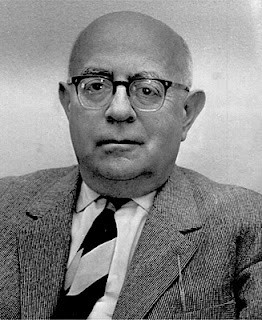
T.W. Adorno
In 1968, the Jewish writer Robert Gutman published a biography of Wagner (Richard Wagner: the Man, his Mind and his Music) in which he portrayed his subject as a racist, psychopathic, proto-Nazi monster. Gutman’s scholarship was questioned at the time, but this did not prevent his book from becoming a best-seller, and as one source notes: “An entire generation of students has been encouraged to accept Gutman’s caricature of Richard Wagner. Even intelligent people, who have either never read Wagner’s writings or tried to penetrate them and failed … have read Gutman’s book and accepted his opinions as facts.”[13] The long-time music critic for The New York Times, the Jewish Harold Schonberg, was one of them, describing Wagner in his Lives of the Great Composers as “Amoral, hedonistic, selfish, virulently racist, arrogant, filled with gospels of the superman … and the superiority of the German race, he stands for all that is unpleasant in human character.”[14] Likewise, for Jewish music critic David Hurwitz, Wagner was “an obnoxious, jackboot-stomping Nazi pygmy.” He regards Verdi, that other great opera composer of the nineteenth century, as “so overwhelmingly more important and deeper and more emotionally significant and a more finished and talented composer than Wagner could ever aspire to being.”[15] According to the composer Thomas Adès, Wagner is more than bad; he is pathologically bad, and his “music grows parasitically … It has a laboratory atmosphere—a sort of fungus.”
Another prominent refrain from Jewish commentators like Jacob Katz, the author of The Darker Side of Genius: Richard Wagner’s Anti-Semitism, is that Wagner’s concern about the Jewish influence on German culture stemmed from his morbid jealousy of all the brilliant Jews around him like Mendelssohn, Meyerbeer and Heine. Taking up this theme, the music writer David Goldman insists that “Wagner ripped off the scenario for his opera ‘The Flying Dutchman’ from Heine and knocked off Mendelssohn’s ‘Fingal’s Cave’ overture in the ‘Dutchman’s’ evocation of the sea. Wagner tried to cover his guilty tracks by denouncing Jewish composers he emulated, including Giacomo Meyerbeer. Wagner was not just a Jew-hater, then, but a backstabbing self-promoter who defamed the Jewish artists he emulated and who (in Meyerbeer’s case) had advanced his career.”[16] Boroson, writing in the Jewish Standard, likewise claims Wagner’s envy of Meyerbeer’s success “played a pivotal role in Wagner’s suddenly becoming a Jew-hater.”[17]
Numerous sources trace Wagner’s anti-Semitism to his perception that a clique of powerful Jews (led by Meyerbeer and Halevy) had thwarted the staging of his Rienzi in Paris, and “at his dependence on money lenders, mostly presumably Jewish, at this time.”[18] Carr notes that from early in his career Wagner’s profligacy “put him in hock with moneylenders who were usually Jews.” Already in Magdeburg where he courted his first wife Minna, “he railed at having to deal with the ‘Jewish scum’ because ‘our people’ offered no credit. In Paris he pawned his goods to Jews and did work he felt was menial for, amongst others, Maurice Schlesinger, a Jewish music publisher. Schlesinger’s cash helped ward off starvation but that made the struggling composer feel no better.”[19] Magee notes that the two and half years Wagner spent in Paris trying and failing to establish himself was “the worst period of deprivation and humiliation he ever had to suffer.”[20]
Invoking Freud, the Jewish music writer Marc A. Weiner in his Richard Wagner and the Anti-Semitic Imagination, claims that: “Wagner’s vehement hatred of Jews was based on a model of projection involving a deep-seated fear of precisely those features within the Self (diminutive stature, nervous demeanor and avarice, as well as lascivious nature) that are projected upon and then recognized and stigmatized in the hated Other.”[21] Weiner’s view echoes that of the Jewish psychiatrist Theodore Rubin who views anti-Semitism as a “symbol sickness” that involves envy, low self-esteem and projection of one’s inner conflicts onto a stereotyped other.[22]
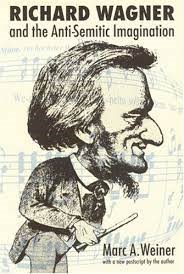
All these various theories, where Wagner’s criticism of Jewish influence is made a scapegoat for his own psychological frustrations, vastly overemphasize the irrational sources of prejudice, and effectively serve to clothe Jews in defensive innocence. According to these theories, anti-Jewish statements are never rational but invariably the product of a warped mind, while Jewish critiques of Europeans always have a thoroughly rational basis.
A Self-hating Jew?
Another well-worn theory has it that Wagner may have been part-Jewish, and that his anti-Semitism was his way of dealing this unedifying prospect (a variation of the “self-hating Jew” hypothesis). It is claimed that Wagner’s biological father was not his presumed father, the police registrar Friedrich Wagner who died of typhus shortly after Wagner’s birth, but his stepfather, the successful actor and painter Ludwig Geyer. However, there is no evidence that Geyer had any Jewish roots. In his biography of Wagner, John Chancellor states plainly that he had none, and “He [Geyer] claimed the same sturdy descent as the Wagners. His pedigree also went back to the middle of the seventeenth century and his forefathers were also, for the most part, organists in small Thuringian towns and villages.”[23] Magee is even more categorical, stating, “Geyer was not Jewish, and it had never occurred to anyone who knew him to think that he might be. He came from a long line of church musicians; for generations his forebears had been Lutheran cantors and organists in the town of Eisleben. There was nothing Jewish about his appearance that might have misled people who were ignorant of his background.”[24]
 Ludwig Geyer
Ludwig Geyer
Chancellor blames Friedrich Nietzsche for first raising the question of Geyer’s possible Jewishness to add extra sting to his charge of illegitimacy, after the philosopher famously fell out with Wagner after years of close friendship. In his 1888 book Der Fall Wagner (The Case of Wagner), Nietzsche claimed that Wagner’s father was Geyer, and made the pun that “Ein Geyer ist beinahe schon ein Adler” (A vulture is almost an eagle)—Geyer also being the German word for a vulture and Adler being a common (but not exclusively) Jewish surname. Magee, while agreeing that Nietzsche undoubtedly intended to rile Wagner with the suggestion of his possible Jewish ancestry, believes Nietzsche’s words also represented a jibe of a quite different kind.
Wagner, a provincial with a regional accent, a lower-middle class family background, and a long personal history of penury, had risen late in life to walk with kings and emperors; and somewhere along the way (strikingly reminiscent of Shakespeare, this, as so often) he allotted himself a coat of arms. This was revealingly (it shows what he thought his descent was), the “Geyer” coat of arms, prominently featuring a vulture against the shield while the kings and emperors would have been displaying their royal or imperial eagles. I think it is more than likely that Nietzsche was being sarcastic about Wagner’s self-promotion to the arms-bearing ranks of society with his “a vulture is almost an eagle.”[25]
If, as has been often claimed, Wagner was concerned with denying the possibility that Geyer may have been his father (because of Geyer’s possible Jewish ancestry), why would he have adopted the Geyer coat of arms and insist it be prominently displayed on the cover of his autobiography? This obvious fact did not deter Gutman who contended that Richard Wagner and his wife Cosima tried to outdo each other in their anti-Semitism because they both had Jewish roots to conceal. While offering no proof Geyer was Jewish, Gutman insists that Wagner in his later years discovered letters from Geyer to his mother which led him to suspect that Geyer was his biological father, and that Geyer might have been Jewish. Wagner’s anti-Semitism was, according to Gutman, his way of dealing with the fear that people would think he was Jewish. Derek Strahan recycles this discredited theme, noting that:
Geyer’s affair with Wagner’s mother pre-dated the death of Wagner’s presumed father, Friedrich Wagner, a Police Registrar who was ill at the time young Richard was conceived, and who died six months after his birth. Soon after this, Wagner’s mother Johanna married Ludwig Geyer. Richard Wagner himself was known as Richard Geyer until, at the age of 14, he had his name legally changed to Wagner. Apparently he had taken some abuse at school because of his Jewish-sounding name. Could his later anti-Semitism have been motivated, at least in part, by sensitivity to this abuse, and by a kind of pre-emptive denial to prevent difficulties and suffering arising from prejudice?[26]
According to the only evidence we have on this point (Cosima’s diaries, 26 December 1868) Wagner “did not believe” that Ludwig Geyer was his real father. Cosima did, however, once note a resemblance between Wagner’s son Siegfried and a picture of Geyer.[27] Pursuing the theme that anyone who expresses antipathy toward Jews must be psychologically unhealthy, Solomon draws a parallel between Wagner and Adolf Hitler in that “both feared they had Jewish paternity, which led to fierce denial and destructive hatred.”[28] For Magee, these theories, which are now widely entrenched in the Wagner literature, are the “crassest falsehood.” Moreover, “the idea that Geyer might have been Jewish, or even that Wagner thought that he might have been, is pure fabrication, distilled nonsense.”[29]
Brenton Sanderson is the author of Battle Lines: Essays on Western Culture, Jewish Influence and Anti-Semitism, banned by Amazon, but available here and here.
[1] Richard Wagner, “Religion and Art,” trans. by William Ashton Ellis, In: Richard Wagner’s Prose Works, Vol. 6 (London: 1897; repr. 1966), 211-52. http://users.belgacom.net/wagnerlibrary/prose/wlpr0126.htm
[2] Richard Wagner, “Hero-dom and Christianity,” trans. by William Ashton Ellis, In: Richard Wagner’s Prose Works Vol. 6 (London: 1897; repr. 1966), 275-84. http://users.belgacom.net/wagnerlibrary/prose/waghero.htm
[3] Richard Wagner, “Know Thyself,” trans. by William Ashton Ellis, In: Richard Wagner’s Prose Works Vol. 6 (London: 1897; repr. 1966), 264-74. http://users.belgacom.net/wagnerlibrary/prose/wagknow.htm
[4] Quoted in Paul Lawrence Rose, German Question/Jewish Question, 361.
[5] Larry Solomon, Wagner and Hitler, (Online article: 2002) http://solomonsmusic.net/WagHit.htm
[6] MacDonald, Separation and its Discontents, 57.
[7] Ibid., 54.
[8] Daniel Barenboim, “Wagner, Israel and the Palestinians,” Blog post, Undated. http://www.danielbarenboim.com/index.php?id=72
[9] Richard Wagner, “Know Thyself,” op. cit.
[10] Magee, Wagner and Philosophy, 352.
[11] Quoted in Martin Kitchen, The Cambridge Illustrated History of Germany, op. cit.
[12] Christopher Nicholson, Richard and Adolf: Did Richard Wagner Incite Adolf Hitler to Commit the Holocaust (Jerusalem: Gefen Publishing House, 2007) 131.
[14] Harold Schonberg, The Lives of the Great Composers (New York: W.W. Norton, 1997), 268.
[15] https://www.youtube.com/watch?v=2ax4N2B4GNs&t=662s
[16] David P. Goldman, “Muted: Performances of Wagner’s music are effectively banned in Israel. Should they be?” Tablet, August 17, 2011. http://www.tabletmag.com/jewish-arts-and-culture/music/75247/muted
[17] Warren Boroson, “Richard Wagner—The Devil Who Had Good Tunes,” Jewish Standard, August 7, 2009, 16.
[18] Michael Steen, The Lives and Times of the Great Composers (London: Icon Books, 2005), 464.
[19] Carr, The Wagner Clan, 83.
[20] Magee, Aspects of Wagner, 26.
[21] Marc A. Weiner, Richard Wagner and the Anti-Semitic Imagination (Lincoln: University of Nebraska Press, 1997), 6.
[22] Theodore Isaac Rubin, Anti-Semitism: A Disease of the Mind (New York: Barricade, 2011), 12.
[23] John Chancellor, Wagner (New York: HarperCollins, 1980), 6.
[24] Magee, Wagner and Philosophy, 358.
[25] Ibid., 360.
[26] Derek Strahan, “Was Wagner Jewish: an old question newly revisited,” Online article, Undated. http://www.revolve.com.au/polemic/wagner.html
[27] Quoted in John Deathridge, Wagner: Beyond Good and Evil (Los Angeles: University of California Press, 2008), 1.
[28] Solomon, “Wagner and Hitler,” op. cit.
[29] Magee, Wagner and Philosophy, 358.

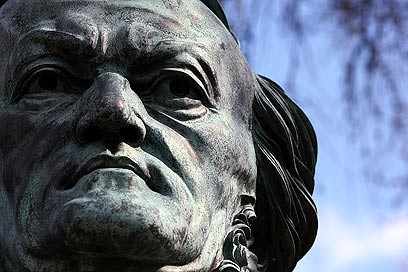
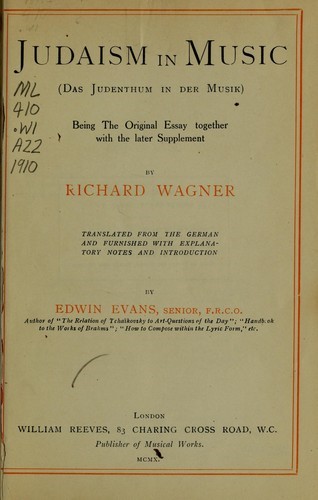 A 1910 English language edition of Judaism in Music
A 1910 English language edition of Judaism in Music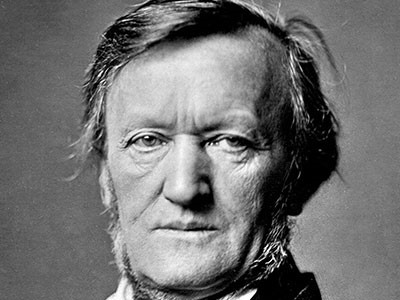 Richard Wagner
Richard Wagner




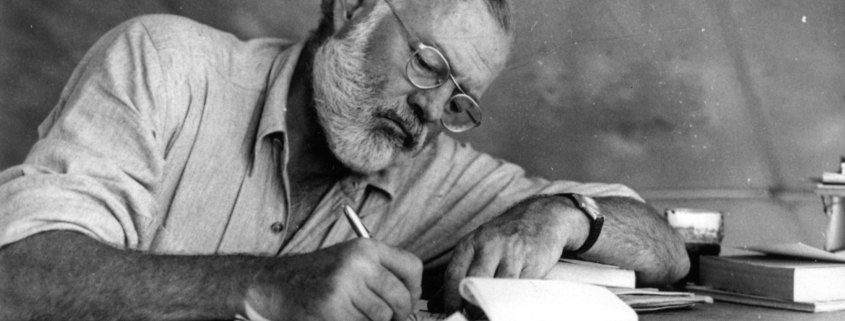
 “Why not make the Jew a bounder in literature as well as in life? Do Jews always have to be so splendid in writing?”
“Why not make the Jew a bounder in literature as well as in life? Do Jews always have to be so splendid in writing?”
